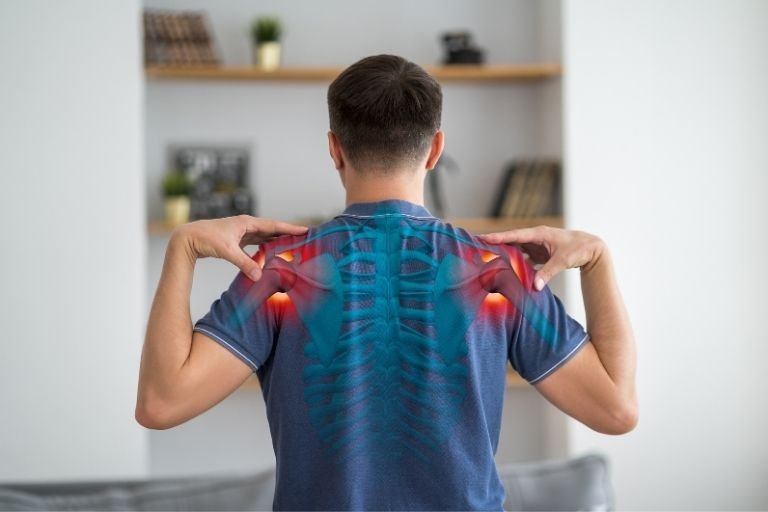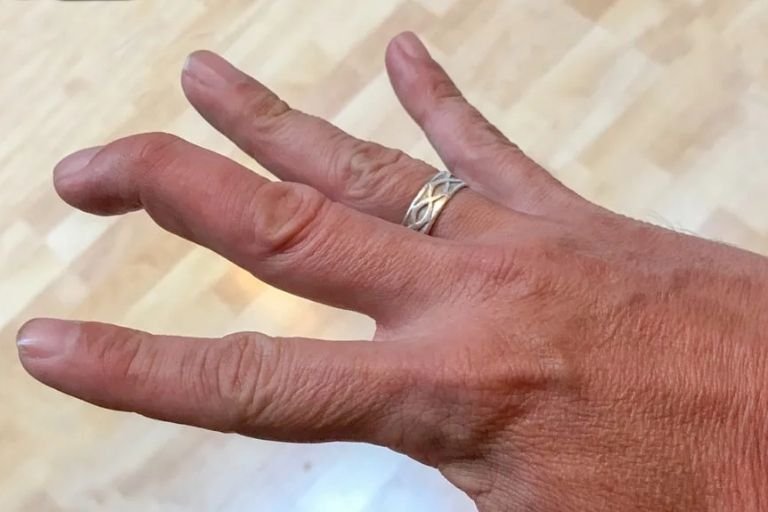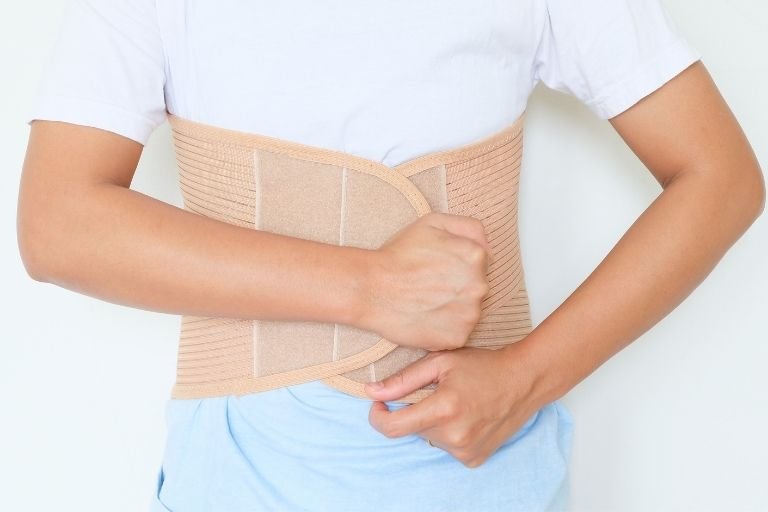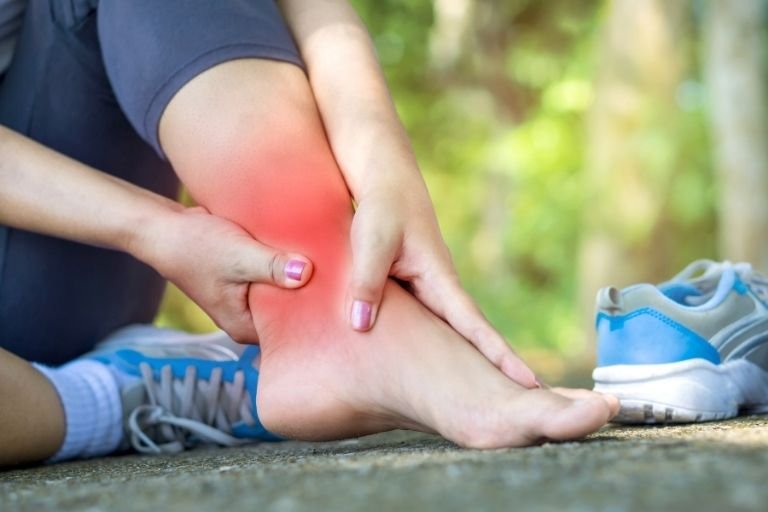- Fitwell Physiotherapy
Sciatica

Sciatica refers to pain that radiates along the path of the sciatic nerve, which branches from your lower back through your hips and buttocks and down each leg. Typically, sciatica affects only one side of your body.
Please submit your details below.
Symptoms of Sciatica
Common symptoms of sciatica include:
- A sharp, burning, or shooting pain that starts in the lower back and radiates down the back of the leg.
- Some people experience numbness, tingling, or a “pins and needles” sensation in the leg or foot.
- Muscle weakness in the affected leg or foot.
- Pain that worsens with movement, making it hard to stand up, walk, or sit down.
Causes of Sciatica
Sciatica occurs when the sciatic nerve is pinched, which can happen due to:
- A disk in the spine slips out of place and presses on the nerve.
- Overgrowths of bone on the vertebrae can compress the nerve.
- Narrowing of the spine that puts pressure on the nerves.
- When the piriformis muscle in the buttocks irritates the sciatic nerve.
- Trauma to the lower back or sciatic nerve.
When to See a Physiotherapist
Consider seeing a physiotherapist if you experience:
- Persistent pain that lasts more than a week.
- Severe pain that prevents normal activities.
- Pain, numbness, or weakness in the leg.
- Difficulty controlling bladder or bowel movements, which may indicate a serious condition called cauda equina syndrome.
Risks of Untreated Sciatica
Factors that increase the risk of developing sciatica include:
- Age-related changes in the spine, such as herniated disks and bone spurs.
- Jobs that require heavy lifting, prolonged sitting, or twisting.
- Excess body weight increases stress on the spine.
- Higher risk of nerve damage.
How to Prevent from Sciatica
Preventing sciatica involves lifestyle changes and proper body mechanics:
- Strengthen the muscles of your back and core.
- Use proper posture when sitting, standing, and lifting.
- Maintain a healthy weight to reduce pressure on the spine.
- Use ergonomic furniture and equipment, especially if you have a desk job.
Treatments Options for Sciatica
Treatments for sciatica can range from self-care and physical therapy to medical interventions:
- Over-the-counter pain relievers, hot and cold packs, and gentle stretching exercises.
- Tailored exercises to strengthen muscles, improve flexibility, and correct posture.
- Prescription medications such as anti-inflammatories, muscle relaxants, and in severe cases, steroid injections.
- In cases where conservative treatments fail and symptoms are severe, surgery might be necessary to remove the portion of the disk or bone spur pressing on the nerve.
Frequently Asked Questions
The most common symptoms of sciatica include:
- Sharp, shooting pain that radiates from the lower back down the leg.
- Numbness or tingling in the leg or foot.
- Muscle weakness in the affected leg.
- Pain that worsens with movement, such as standing up, walking, or sitting for long periods.
- A burning or tingling sensation in the leg.
Treatment options vary depending on the severity and underlying cause of sciatica. They may include:
- Medications: Pain relievers, anti-inflammatory drugs, muscle relaxants, and sometimes prescription medications.
- Physical Therapy: Exercises and stretches to improve flexibility, strength, and support the spine.
- Heat/Ice Therapy: Applying heat or ice packs to reduce pain and inflammation.
- Manual Therapy: Techniques such as massage or spinal manipulation to relieve pressure on the sciatic nerve.
- Surgery: In severe cases, surgery may be necessary to remove the source of nerve compression.
While not all cases of sciatica can be prevented, certain lifestyle changes can reduce the risk of developing it. These include:
- Exercise Regularly: Strengthening the core and back muscles to support the spine.
- Maintain Proper Posture: Avoid prolonged sitting and practice good posture to reduce strain on the lower back.
- Lift Properly: Use proper lifting techniques to avoid putting undue stress on the spine.
- Healthy Weight: Maintaining a healthy weight to reduce pressure on the spine.
- Avoid Smoking: Smoking can increase the risk of disc degeneration, which can lead to sciatica.
Related Conditions
How Fitwell Physiotherapy Can Help?
Dr. Richa’s Fitwell physiotherapy has an extensive team of physiotherapists all within their own specialist areas of physiotherapy. Whatever your condition, we guarantee that we will have the best physiotherapist for you. We assess, diagnose, plan, cure and care for you.
Fitwell Physiotherapy Clinic, Pune provides you best physiotherapy treatment in Kharadi, pune. We also serve Chandan Nagar, Vadgaon Sheri, Keshav Nagar, Wagholi & nearby Areas in Pune. We are experts in treating Neck Pain, Hand Pain, Back Pain, Lower Back Pain, Knee Pain, Stiff Neck, Sciatica, Arthritis, Stroke Paralysis & Post Surgical Rehab.
We provide Specialized physiotherapy treatments in Sports Injuries, Pre and post Surgery, Neurologic, Pediatric, Chronic Pain/Fatigue, Rheumatology, Women’s Health, Men’s Health, Ergonomics, Vestibular, Amputees & all sort of Pain treatment and lifestyle conditions.

































































































